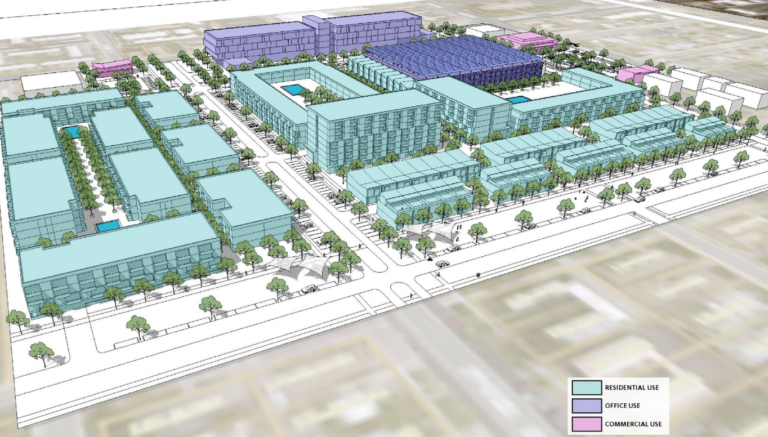A recent archaeological report on the Transform 17 master plan at University and Mesa drives in Mesa notes several potential historical finds on the 27-acre site.
The City of Mesa and Miravista Holdings are expected to sign a final development agreement in August to finally develop the project, which has been on the City’s radar for decades.
As part of Miravista’s master planning process, archaeology company PaleoWest reviewed documentation on the site’s historical features to assess what cultural resources, if any, might be disturbed within a half-mile radius in the development proceeds.
The report found reason to believe there may be “significant information” on prehistoric residents and on Mesa’s early residents and development. It said historical development in the area could have preserved historic resources that could still exist in the project area, and that historical deposits like refuse sites could have survived the demolition of structures the City acquired to prepare Transform 17.
The report recommends digging test trenches to expose the subsurface area in as much as 1% of the site before construction starts. The test trenches could offer a better insight as to what lies beneath without digging up the entire area.
PaleoWest’s reports cites a prehistoric Hohokam-era canal that traversed the site from the northeast to the southwest. Evidence of the canal could still exist below the site surface. Four test digs are recommended to determine what, if any, evidence remains.
A review of old maps also found a road marked, “Maricopa Wells to Fort McDowell,” running just outside the Transform 17 boundary on an 1870 map. A railroad also crossed the site in the early 1900s.
Miravista Holdings representatives said the company has not yet looked into testing or mitigation measures, as it is focused on finishing the entitlement and development agreement processes with Mesa. Those considerations will be examined when a construction timeline is established. (Source)

